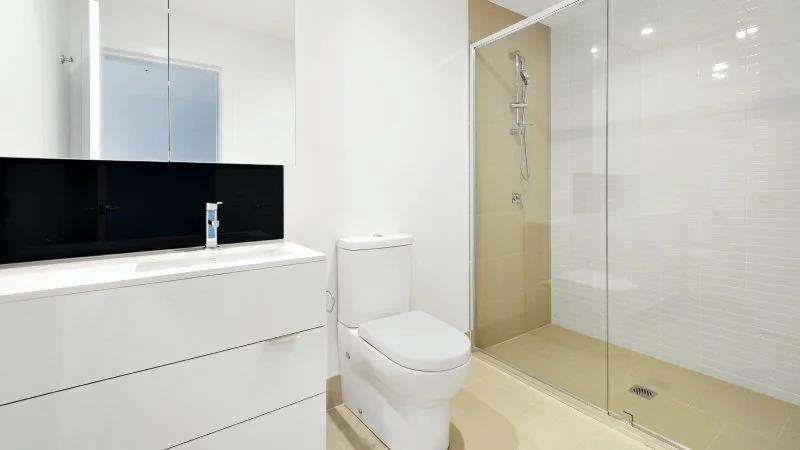When renovating or building a home, it’s essential to consider ventilation requirements, especially in moisture-prone areas like bathrooms. An extractor fan is a vital component for maintaining air quality, preventing mold, and reducing moisture buildup in bathrooms. In the UK, bathroom extractor fan building regs set specific standards to ensure proper ventilation in bathrooms, promoting health and safety. In this article, we’ll explain the importance of bathroom extractor fans, the building regulations that govern them, and how to ensure your installation complies with the law.
Why Do Bathroom Extractor Fans Matter?
Bathrooms are high-moisture areas, and without proper ventilation, excessive humidity can lead to issues such as mold, mildew, and water damage. Extractor fans expel moist air to improve ventilation and air quality in the bathroom. The bathroom extractor fan building regs ensure that you properly size and install your extractor fan to prevent problems and keep your bathroom fresh and healthy.
The building regulations for bathroom extractor fans ensure that your home is up to code, while also safeguarding the structure and the health of its occupants. A compliant extractor fan is essential to maintaining an optimal living environment.
Key Building Regulations for Bathroom Extractor Fans
In the UK, Part F of the Building Regulations 2010 regulates the installation of bathroom extractor fans, focusing on ventilation. Here are the main requirements for installing a bathroom extractor fan:
- Minimum Ventilation Rate: The bathroom extractor fan building regs require a minimum airflow rate of 15 liters per second (l/s) for a typical bathroom. This ensures that the fan can efficiently expel moist air from the room.
- Continuous Ventilation: The fan must be capable of continuous operation. This requirement applies unless the bathroom has adequate natural ventilation, such as a window that someone can open wide enough to provide the required airflow.
- Power Source: The dedicated electrical circuit must wire the extractor fan. It should connect to a switch that allows it to run independently of other devices in the room.
- Noise Level: According to bathroom extractor fan building regs, the noise level of the fan should not exceed 35 dB(A) when operating at full speed. This ensures that the fan operates quietly without being disruptive.
- Positioning and Location: The fan should be installed near the source of moisture, typically above the bath, shower, or sink. Its location is crucial for maximizing efficiency and ensuring proper airflow.
- External Ventilation: The fan must expel air directly to the outside, not into the loft or other interior spaces. The ducting should be short, straight, and properly insulated to maintain efficiency.
Types of Bathroom Extractor Fans
Various types of bathroom extractor fans are designed to meet different needs. When considering bathroom extractor fan building regs, it’s important to choose the right type of fan for your space:
- Wall-Mounted Extractor Fans: These common options are typically installed directly onto the external wall of the bathroom. Wall-mounted fans are easy to install and expel air directly outside, complying with bathroom extractor fan building regs.
- Ceiling-Mounted Extractor Fans: These are ideal for bathrooms with limited wall space or for rooms with sloped ceilings. Ceiling-mounted fans require ducting that vents air outside.
- Inline Extractor Fans: Installed within the loft space, these fans use ducting to expel air from the bathroom to the outside. Inline fans are quieter than other types and are suitable for larger bathrooms or situations requiring higher extraction power.
- Humidity-Sensitive Fans: These fans automatically activate when humidity levels rise above a certain threshold. Humidity-sensitive fans are energy-efficient and can be a great choice for bathrooms that need ventilation only when necessary.
Common Mistakes to Avoid in Bathroom Extractor Fan Installation
When installing a bathroom extractor fan, it’s vital to follow the bathroom extractor fan building regs to ensure optimal performance and safety. Here are a few common installation mistakes to avoid:
- Insufficient Ventilation Rate: Failing to meet the required 15 l/s airflow can result in inadequate ventilation, leading to moisture buildup. Always choose a fan with the appropriate airflow rate for your bathroom size.
- Incorrect Placement: Install the fan above the shower, bath, or sink for efficient moisture extraction. Incorrect placement can reduce the fan’s effectiveness.
- Improper Ducting: Ducts should be straight, short, and insulated to reduce condensation and improve airflow. Avoid using flexible ducts or letting ducts bend excessively.
- Electrical Connection Errors: Make sure to wire the fan into a separate electrical circuit and ensure it complies with safety regulations. If you’re unsure, consult a qualified electrician to guarantee compliance with bathroom extractor fan building regs.
How to Ensure Compliance with Building Regulations
To ensure your bathroom extractor fan installation complies with bathroom extractor fan building regs, follow these guidelines:
- Hire a Professional: If you’re unsure about any aspect of the installation, consult a qualified electrician or builder who is familiar with the building regulations.
- Check Product Specifications: Verify that the extractor fan you choose meets the required airflow rate, noise level, and other specifications outlined in the building regulations.
- Obtain Necessary Approvals: If you’re undertaking major renovations or electrical work, you may need approval from your local building authority to ensure your installation complies with bathroom extractor fan building regs.
Conclusion
Proper installation of a bathroom extractor fan is essential for ensuring a healthy, mold-free environment. By following the bathroom extractor fan building regulations, you can ensure that your bathroom is well-ventilated and that you are installing it safely, effectively, and in compliance with the law.
Choose the right type of fan, install it correctly, and ensure it meets the required airflow rates and noise standards. By doing so, you’ll prevent moisture damage, enhance air quality, and create a more comfortable bathroom space. Always check your local regulations and consult a professional if needed to ensure your extractor fan is up to code.


Thank you for your sharing. I am worried that I lack creative ideas. It is your article that makes me full of hope. Thank you. But, I have a question, can you help me?